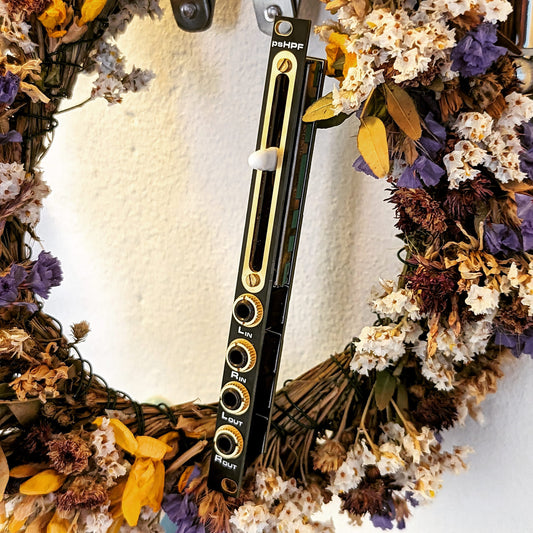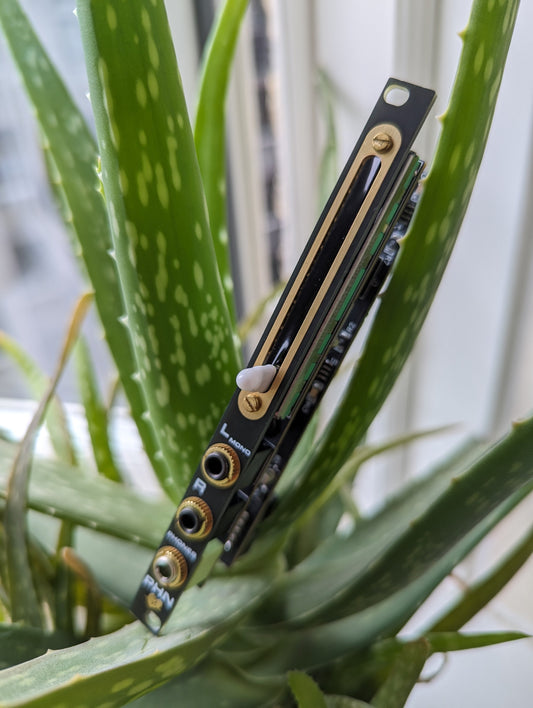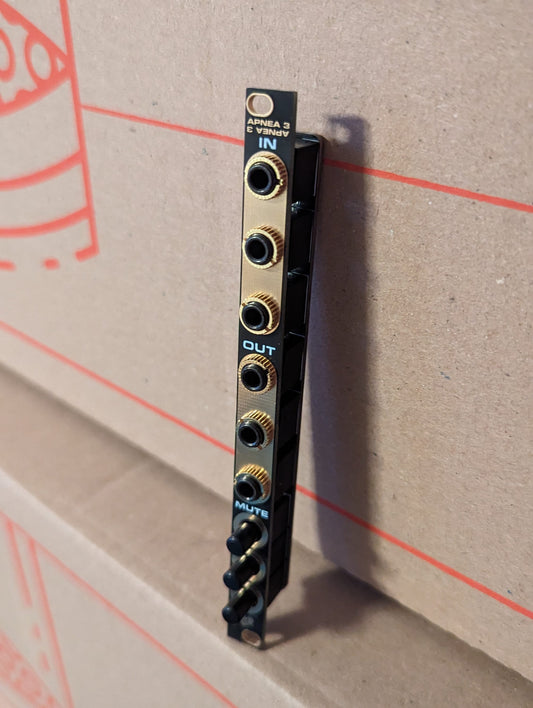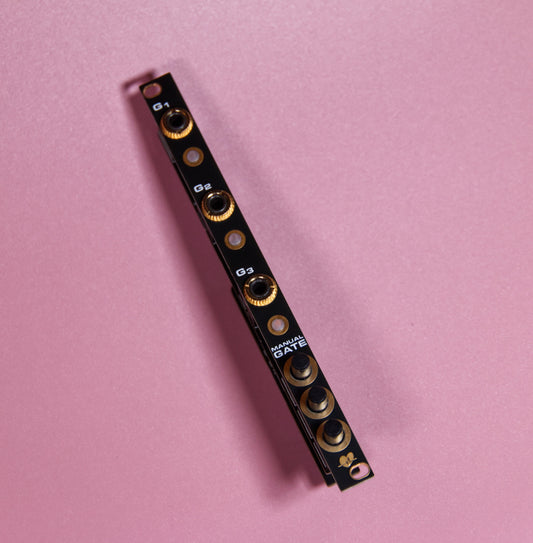What are the best 2hp modules?
As with anything in Eurorack, it's hard to categorize any one particular module as the best of any category. It is ultimately your needs and preferences that determine what is the best for you, but even so, I have some principles I try to take into account when I design my 2hp Eurorack modules.
Consider the ergonomics: reject wobbly pots.
2hp is very narrow - sensible, considering the fact that space in most Eurorack systems is both costly and limited, but a disadvantage for those of us with hands like fleshy clubs. The format also makes many constructions difficult for designers, meaning that some 2hp modules end up suffering from wobbly pots, fragile connectors or end up flexing and bowing precariously under pressure.
One principle I try to adhere to when designing in 2hp, is to use slide pots whenever a pot is called for. Unlike rotary pots, a slide pot will not wobble, and can help make the design more rigid when designed properly. It is also easier to use a slide pot in a tight space, as opposed to a rotary pot which requires a pincer grip to operate.
Be mindful of the placement of your modules in your rack as well. Think about which modules you need to operate often, and place them closer to the natural resting position of your dominant hand, while modules that stay more permanently patched can be safely tucked out of reach. Sometimes, flipping a module upside down will even help get patch cables or the like out of the way, and some modules, like the Herzlich Labs mApnea, are even designed to be installed either way.
Utilities are the most exciting, boring modules.
You spend lots of time picking out the most advanced modulators, effects and voices, but how much attention do you really pay to your utilities? Sure, you can find the occasional great sounding module in 2hp, but there are countless utilities that can help you get even more out of your modules, as well as making your sound your own.
Often, we get larger and fully featured modules to take prominent roles in our patches, or advanced modules that do a great deal of complex operations, but we end up neglecting the basic building blocks of synthesis that help us do interesting things with the tools we already have.
Even the simplest utilities can make for interesting tools: an attenuator can variably reduce the intensity of an LFO or modulation signal, and a unity gain mixer can combine different modulation signals according to their attenuated states. An inverter combined with an offset lets you do all kinds of interesting waveshaping operations, and a gate to trigger utility will allow you to get snappy triggers out of gate generating systems.
Mults and buffered mults should be present in any system, and a small touch controller, passive mute or manual gate generator can add lots of performance functionality to live-oriented systems, without sacrificing very much rackspace.
Take it outside, why don't you?
For when space is really limited, consider using an external rack, or the Herzlich Labs Horizontal Adapter, to move passive 2hp modules out of the rack. A great example of how to utilize this effectively, is the mApnea 3 + Dual Active Mixer bundle - with just 2hp of rackspace utilized, you can build a perfectly serviceable 6-channel performance mixer, which would otherwise take up a great deal of space.
There are many wonderful, large modules available in modular - but you don't have to compromise on build or design quality when it comes to 2hp, and gathering many useful basic building blocks of synthesis neither has to be space or cost prohibitive. Consider my selection of 2hp modules for your next patching adventure, and especially consider all the options that open to you when placing some of your modules outside your rack.
2hp Modules from Herzlich Labs
-
Passive Stereo High Pass Filter - 2hp - psHPF - Compact passive filter for utility, mixing, EQ and filtering duties
Regular price 469,00 DKKRegular priceUnit price / per -
Line Level Output and Headphone Preamp - 2hp - stereo Eurorack to line-level output with volume control
Regular price 549,00 DKKRegular priceUnit price / per -
Triple Performance Mute - 2hp - Apnea 3 - passive performance mutes for audio and CV signals
Regular price From 299,00 DKKRegular priceUnit price / per -
Triple Manual Gate Generator - 2hp - Manual 5v gate generator with three outputs, available with both latching and momentary action
Regular price 549,00 DKKRegular priceUnit price / per




